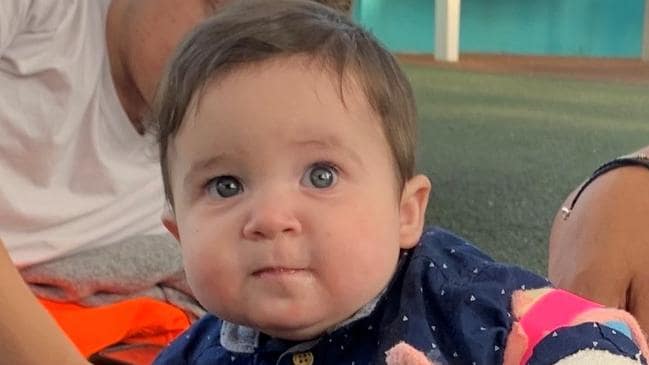“Split second” moment leaves little boy severely burned

Looking away for a “split second” was all it took for a little boy to suffer horrific injuries from a common household item.
In July last year, aged care nurse Georgette Lysaght went to work and left her husband to look after their two children, six-month-old Ben and older sister Brooklyn, in the family room of their Moree home in northwest NSW.
Mr Lysaght was sitting on the floor while the children played, with Ben using a walker to make his way around the room, when Mr Lysaght turned to reach behind him for his ringing phone.
The room had a gas heater built into a faux fireplace that served as the home’s only heat source.
“He had turned to pick up the phone and answer it because it had rung and in that split second Ben had pushed himself to the gas heater and grabbed hold of the bars,” Ms Lysaght said.
“Initially his hands got stuck to them and he didn’t make a sound … [Ben was] red in the face from that pain where you can’t even talk.”
What Mr Lysaght did next saved his son from having to receive a skin graft, doctors would later say.
The quick-thinking dad picked up Ben and ran his burned hand under a tap.
When Mr Lysaght then called his wife, she could hear Ben now screaming in the background.
“All [my husband] said was ‘burn’ … my husband couldn’t even talk, he was just in so much shock,” she said.
When Ms Lysaght got home the parents rushed Ben to Moree Hospital, after wrapping his hand in a damp cloth and using ice to keep cool water running over the burn.
“Ben actually wasn’t crying when [hospital staff] were touching it. I didn’t know at the time and I was like ‘that’s good right? It doesn’t hurt as much’,” Ms Lysaght said.
“They said no, it’s bad because it means it’s gone down so deep he can’t feel it on the top layers ... he had basically fried all his nerves.”
As a result of his third degree burns, the tips of two of Ben’s fingers were removed as that part of the hand had ‘died’.
After the surgery, Mr and Ms Lysaght had to take Ben to The Children’s Hospital in Westmead, Sydney, for fortnightly and monthly physio and fitting of new casts to protect the burn.
Nearly a year later, Ben’s hand has now mostly healed, but he is yet to regain feeling in his hand. Doctors have said the sensation will eventually come back.
“If he picks things up with that hand and he puts it in his mouth, he gets a shock, he’s not expecting it to be cold or hot,” Ms Lysaght said.
While too young to fully remember the incident, Ben does get upset whenever he sees a gas heater and the Lysaghts have since moved to a new home with split-cycle air conditioning and heating instead.
By sharing their story, Ms Lysaght hopes to help other families become more aware of the dangers heaters pose and how knowing first aid is so vital.
What to do after a burn
After a burn, run the affected area under cool running water for 20 minutes - and avoid using butter, gel, cream, iced water or ice.
“When a burn occurs, the first step in treatment should always be cool running water. This can reduce the thickness of the burn, as well as the time a burn will take to heal,” said Dr Torey Lawrence, head of the burns unit at The Children’s Hospital in Westmead and Sydney Children’s Hospital Randwick.
He said using cold water was the “only effective first aid for burns”.
